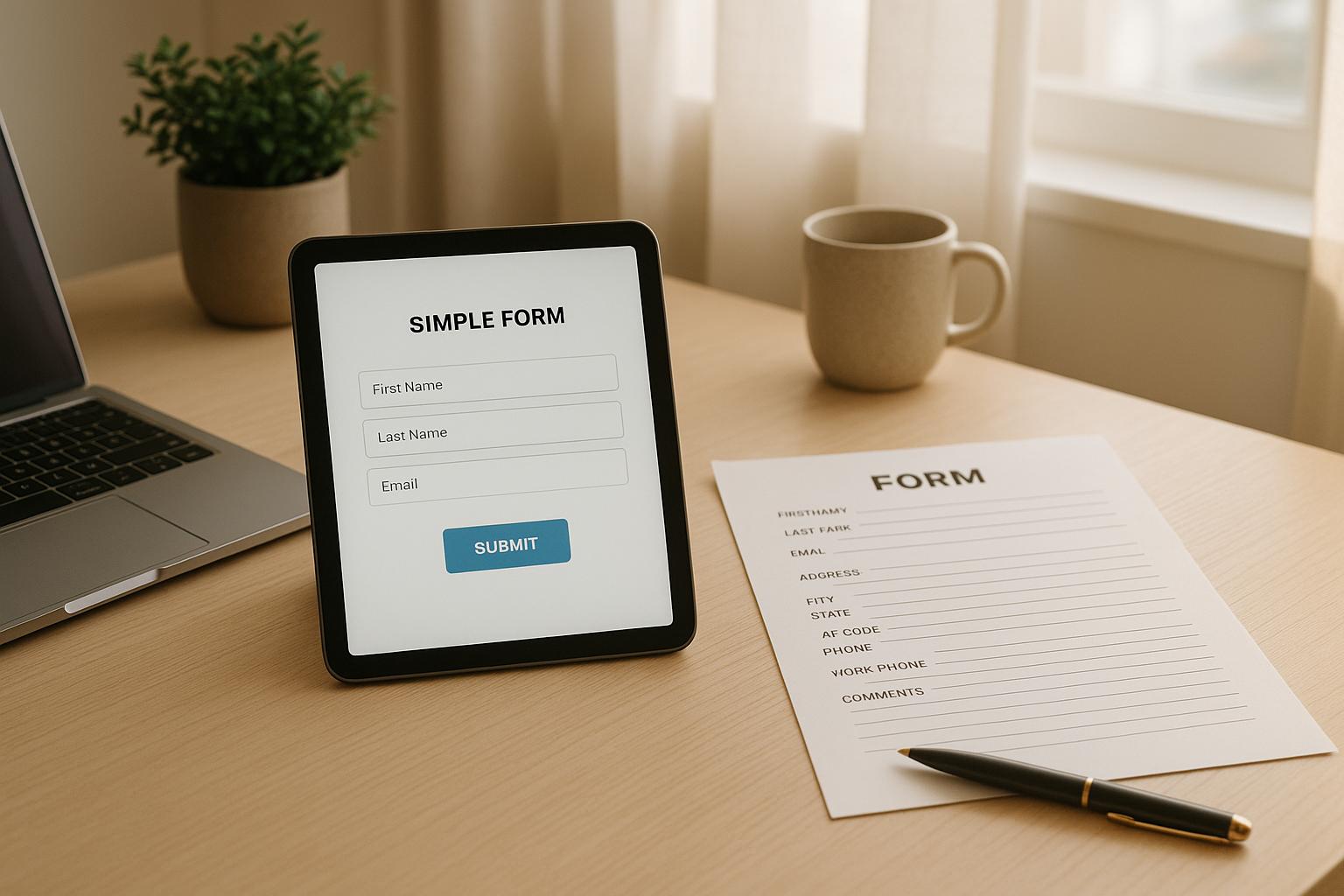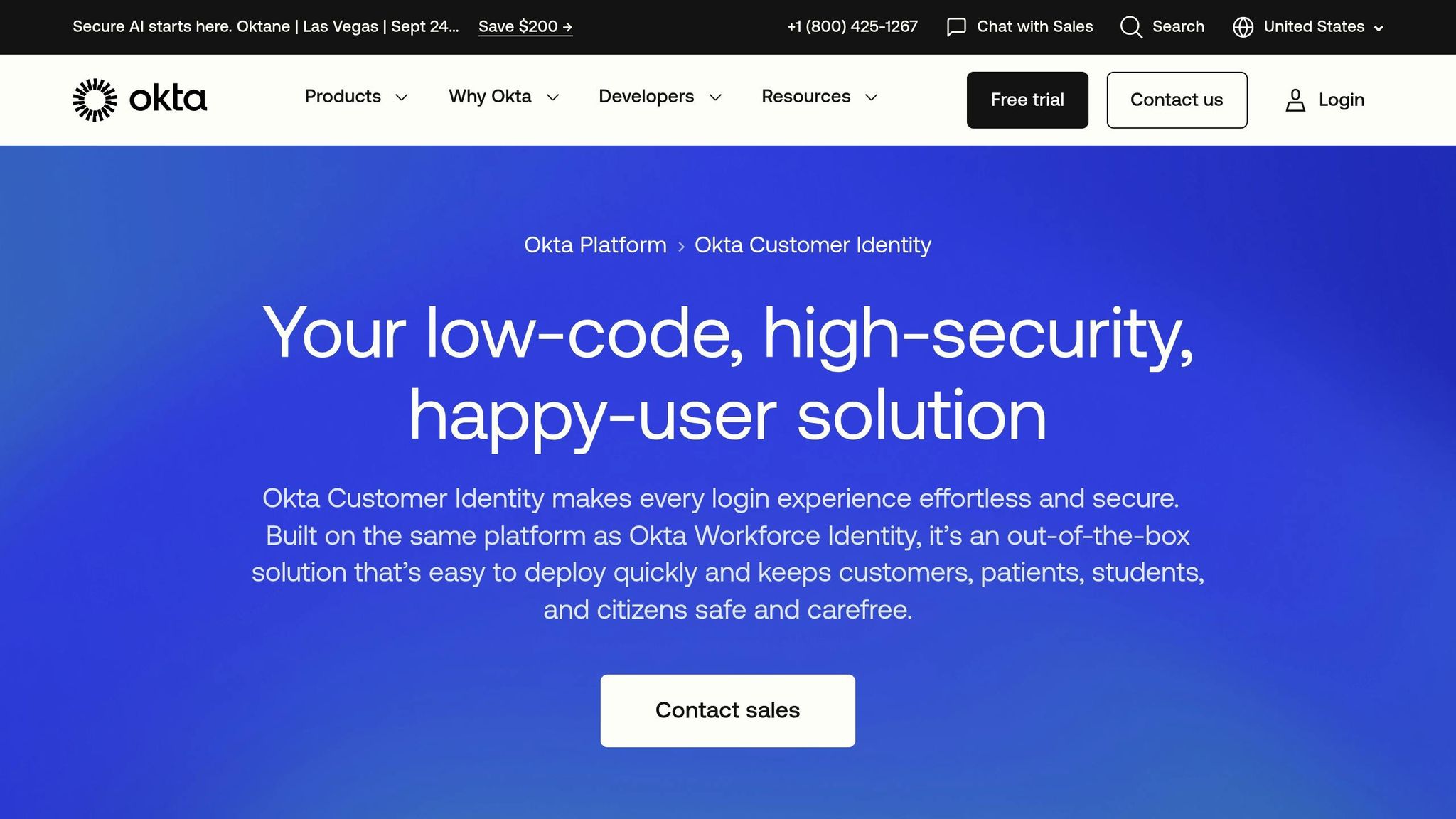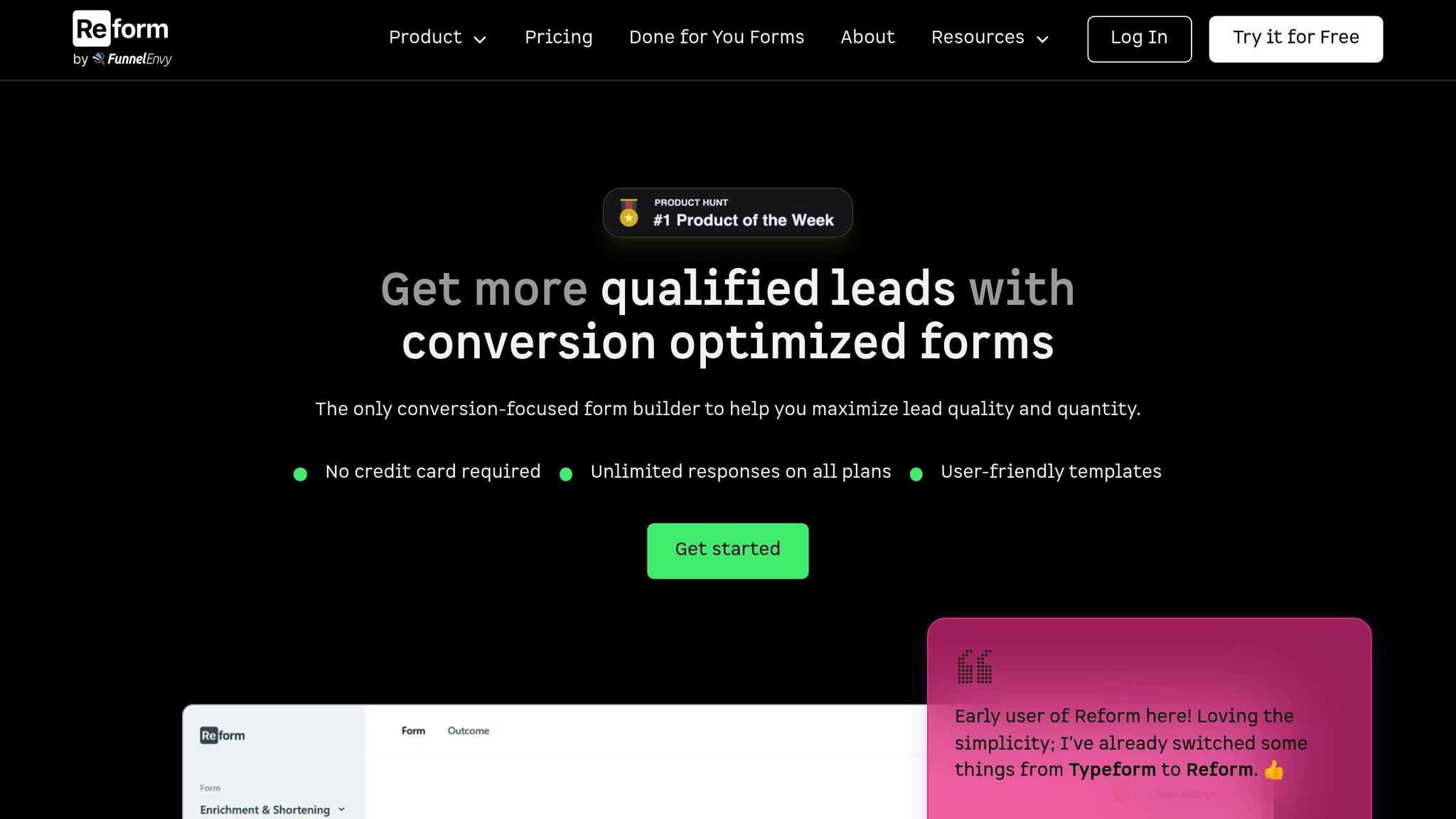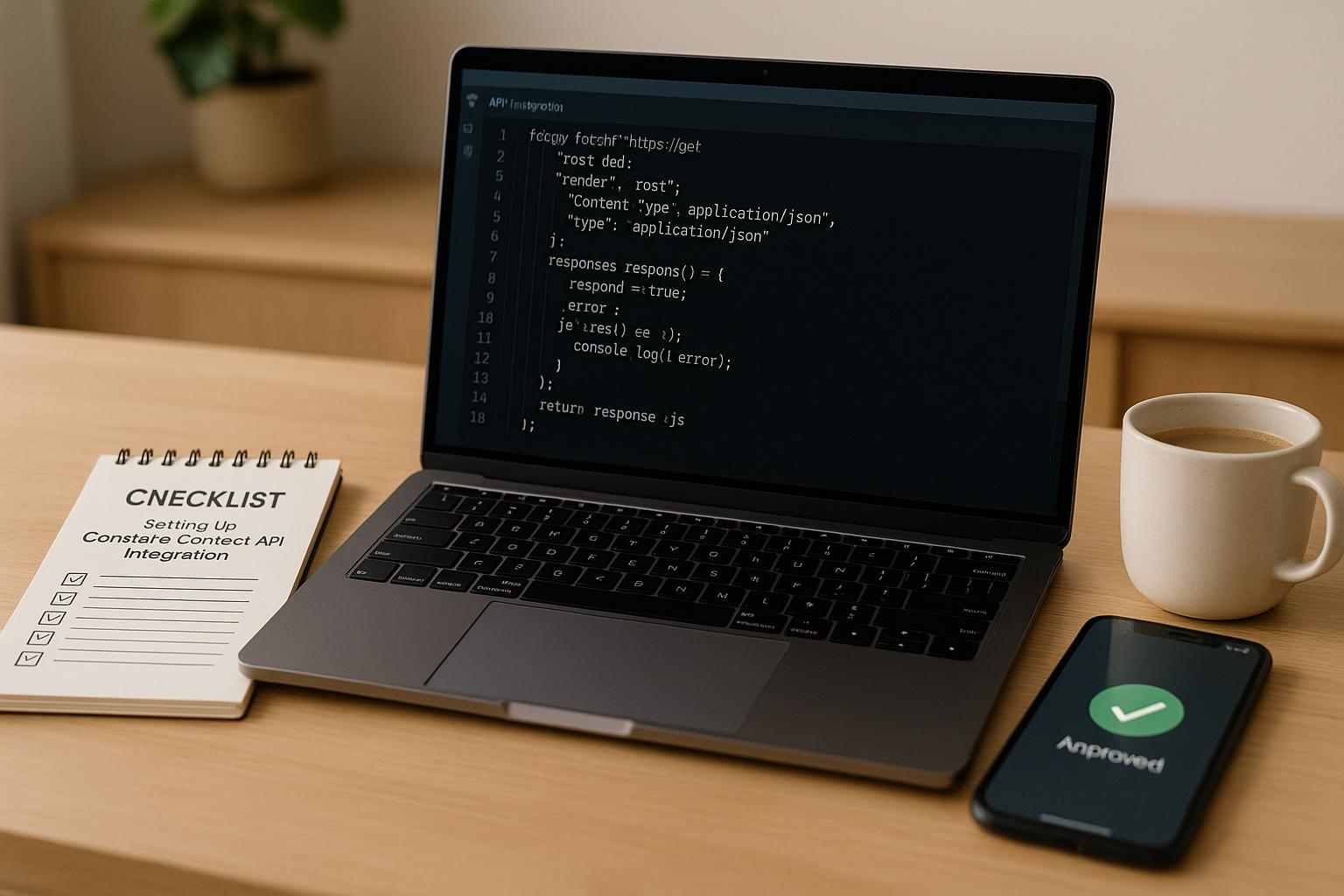Progressive Profiling vs. Traditional Forms: Key Differences

When it comes to collecting user data, progressive profiling and traditional forms take very different approaches. Traditional forms request all information in one go, which can overwhelm users and lead to high abandonment rates. Progressive profiling, on the other hand, spreads data collection across multiple interactions, creating a smoother experience. Here's what you need to know:
-
Traditional Forms:
- All fields are presented upfront.
- Often lead to "form fatigue" due to length.
- Best for situations requiring complete data upfront, like job applications or event signups.
-
Progressive Profiling:
- Gathers details gradually over time.
- Reduces friction and builds trust by asking for new information only during subsequent interactions.
- Ideal for improving lead quality and personalization.
Quick Comparison
| Factor | Traditional Forms | Progressive Profiling |
|---|---|---|
| Data Collection | All at once | Gradual over multiple interactions |
| User Experience | Can be overwhelming | Smoother and less intimidating |
| Conversion Rates | Lower due to long forms | Higher by reducing friction |
| Personalization | Limited | Better through ongoing data updates |
| Flexibility | Static | Dynamic, adjusts based on user behavior |
| Data Accuracy | Often less accurate | More accurate over time |
Progressive profiling not only reduces drop-offs but also improves data quality and personalization, making it a smart choice for businesses focused on user engagement and trust.
Progressive Profiling (in two minutes) | Okta CIC 2023

What Are Traditional Forms?
Traditional forms are essentially digital versions of paper forms, where all fields are displayed on a single page. Users can see everything they need to fill out right from the start, which makes it clear what information is required before they begin.
For example, a contact form might ask for details like name, email, phone number, and company information. Similarly, a registration form could require personal details, payment information, and user preferences - all visible at once on the screen.
These forms are designed to gather all the necessary information in one interaction.
How Traditional Forms Work
The process behind traditional forms is simple and direct. When users visit your webpage, they’re presented with the entire form, complete with clearly labeled fields like "First Name" or "Email Address." These fields are typically arranged in a straightforward, linear order.
This setup allows users to review the form in its entirety before deciding if they’re comfortable sharing the requested details. Because the process is transparent, traditional forms often have lower abandonment rates compared to conversational forms, where users might feel uncertain about what’s coming next.
Most traditional forms include basic features like email validation to ensure correct formatting and required fields to avoid incomplete submissions. Some even add security measures like CAPTCHA to block spam entries. Once the form is submitted, the data is directly sent to tools like your CRM or marketing automation system for processing.
Problems with Traditional Forms
One of the main drawbacks of traditional forms is the risk of form fatigue. When users are faced with a long list of fields, they may feel overwhelmed and leave without completing it. This can lead to delays and even compliance challenges.
Another issue is the difficulty of storing and retrieving data efficiently, which can become costly over time. Traditional forms also lack the ability to adapt dynamically based on user input, making them less flexible.
Additionally, these forms often struggle to engage diverse audiences and can suffer from social desirability bias - where respondents provide answers they think are expected rather than honest ones. This is especially problematic for sensitive topics, as it can create a mental and emotional burden for users. As a result, the data collected may be incomplete or inaccurate, leading to time-consuming cleanups.
When to Use Traditional Forms
Traditional forms are ideal for situations where detailed and complete information is needed upfront. This makes them a good fit for event registrations, job applications, or official documentation that requires a clear and comprehensive record.
They also work well for simple tasks. For example, a basic newsletter signup form that only asks for a name and email is perfectly suited to this format. In cases where you only need a small amount of information, there’s no need for more complex profiling methods.
Interestingly, 74% of businesses use lead generation forms to capture leads, and nearly half (49.7%) say these forms are their most effective conversion tool. Traditional forms are particularly effective in B2B settings, where decision-makers are often willing to fill out detailed forms to access valuable resources or services.
The key to success with traditional forms is to keep the number of fields reasonable and ensure that each one serves a clear purpose for the user. Also, make sure the form is easy to find and doesn’t interfere with your main content.
Up next, we’ll look at an alternative method that aims to reduce form fatigue while gradually building user trust.
What Is Progressive Profiling?
Progressive profiling is a smarter way to collect user data by spreading out requests over multiple interactions rather than overwhelming users with lengthy forms all at once. Instead of asking for a name, email, phone number, company details, and preferences in one go, this method gradually gathers information during different touchpoints with your brand.
The idea is simple: respect users' time and comfort level while building a detailed profile that helps you understand and serve them better. As Lilibeth Acuna explains:
Progressive profiling is an important part of the lead nurturing process, focusing on the customer, not you.
By taking small steps, this method reduces friction and creates a smoother, more user-friendly experience.
How Progressive Profiling Works
Progressive profiling relies on tools like cookies and marketing automation systems with smart form fields. These tools track what data you already have and ask for new information during subsequent visits. For instance, if someone downloads a resource from your site, the first form might only ask for their name and email. The next time, it could request their company name and role, followed by more specific details like company size or challenges in later interactions.
Michael Schmidt, Senior Product Manager at Arc XP, explains the approach:
Small portions of information collected at the right time across the customer journey help us build a more accurate and complete user profile in a way that respects compliance and doesn't feel creepy.
Brands like Otter.ai, Sephora, and Flo use this strategy effectively. They start with basic details and gradually gather more as users interact with their platforms. This step-by-step process not only improves engagement but also ensures better data accuracy.
Benefits of Progressive Profiling
The advantages of progressive profiling go beyond just reducing form abandonment rates. Shorter forms at each interaction build trust and encourage users to share more over time. This leads to higher-quality data and better personalization - something that 78% of consumers say makes them more likely to make repeat purchases.
It also tackles a major issue: 67% of users admit to abandoning forms halfway through. Companies like Hinge have seen a surge in inbound leads and user engagement by starting with basic information and gradually collecting more as users continue interacting with their brand.
Progressive Profiling Methods
There are several ways to implement progressive profiling, depending on your business model and customer journey:
- Multi-step forms: Break a long form into smaller, manageable sections spread across multiple steps or pages.
- Conditional logic: Adjust form fields based on users' earlier responses to make the process more relevant and streamlined.
- Email-based profiling: For example, Millennium Hotels sends timed emails inviting guests to complete their profiles, offering loyalty points or personalized perks as incentives.
- Indirect profiling: Use user behavior to gather insights. Ikea, for instance, builds profiles by analyzing browsing and purchase patterns instead of relying solely on form submissions.
- In-platform questions: Software companies like Atlassian weave questions into the user experience, such as during login, to gather data and personalize templates more effectively.
The key to success lies in timing and offering value. Ask for additional details at natural points in the user journey - avoiding moments that could disrupt conversions - and space out these requests to keep the experience positive. These methods show how progressive profiling can fit seamlessly into different user journeys while delivering meaningful results.
Progressive Profiling vs Traditional Forms: Key Differences
The main contrast lies in when and how much information is gathered from users. Traditional forms rely on an all-at-once approach, while progressive profiling takes a gradual, relationship-focused path.
With traditional forms, you’re asking for as much data as possible in a single interaction. In contrast, progressive profiling collects information step by step, adjusting questions over time. This creates vastly different user experiences and outcomes.
The impact on user behavior is clear. 27% of users abandon forms because they’re too long, and 10% leave due to unnecessary questions. Progressive profiling helps address these issues by spreading out data collection, making the process less overwhelming. This difference can lead to measurable improvements in performance.
"Progressive profiling offers a less intrusive, more user-centered approach to data collection compared to traditional methods." - Lilibeth Acuna
Forms with fewer fields can achieve up to 120% higher conversion rates, and shorter forms may increase completion rates by up to 40%. Additionally, 78% of marketers using progressive profiling report improved lead quality.
Comparison Table
| Factor | Traditional Forms | Progressive Profiling |
|---|---|---|
| Data Collection Method | Collects all data upfront in one interaction | Collects data gradually over multiple interactions |
| User Experience | Overwhelming, leading to form abandonment | User-friendly, less intimidating, and more engaging |
| Conversion Rates | Lower due to form fatigue | Higher due to gradual data collection |
| Personalization | Limited personalization | Improved personalization through ongoing data enrichment |
| Flexibility | Static, doesn’t adapt to user behavior | Dynamic, adjusts questions based on user engagement |
| Data Accuracy | Often less accurate due to the burden of upfront input | More accurate as users willingly update information over time |
| CRM Integration | Static data entries that can quickly become outdated | Continuous updates that create evolving user profiles |
Reducing the number of required fields can lower form abandonment rates by 10–20%. For example, one company reported a 20% boost in conversions within a single month after implementing progressive profiling.
A standout difference is how CRM systems benefit. Traditional forms result in static profiles that quickly lose relevance. Progressive profiling, on the other hand, creates dynamic, evolving profiles that grow richer with every interaction. These living profiles allow for advanced segmentation and personalization, delivering long-term value for businesses.
sbb-itb-5f36581
Impact on Conversion Rates and Lead Quality
When comparing data collection methods, the influence of progressive profiling on conversion rates and lead quality becomes clear - it consistently outperforms traditional approaches.
Why? Because progressive profiling minimizes the barriers users face during sign-ups. Studies show that every extra field in a registration form can decrease conversion rates by up to 10%. Traditional forms, which often demand extensive upfront information, can feel overwhelming and lead to drop-offs.
On the other hand, personalization through progressive profiling has been shown to increase conversion rates by up to 20%. By collecting data gradually, it reduces friction and creates a smoother user experience.
Consider this: a leading e-commerce platform reported a 15% boost in conversion rates and a 20% rise in customer satisfaction after adopting progressive profiling. The approach not only improved their sign-up process but also enhanced the overall customer journey.
The SaaS sector offers another compelling example. One prominent SaaS provider implemented progressive profiling during onboarding and saw a 25% drop in churn rates and higher user satisfaction scores. By spreading data collection across multiple touchpoints, they avoided overwhelming new users, leading to greater long-term engagement.
Financial services have also reaped the rewards. A major financial institution used progressive profiling to better address customer needs, achieving a 30% increase in retention and a 40% improvement in customer satisfaction. This gradual approach to understanding users helped build trust and loyalty over time.
The benefits extend beyond individual examples. According to research, 78% of marketers report better lead quality when users can share their information at their own pace.
"Progressive registration isn't just a clever UX tactic - it's a strategic growth engine. For media companies seeking to boost user conversions without compromising the user experience, this approach presents a win-win scenario: users receive value upfront, and brands gather high-quality data over time." - Audience Marketing Matters
What makes progressive profiling so effective is its ability to continuously enrich user profiles. Unlike static data collected through traditional forms, this ongoing process allows businesses to build more accurate and valuable customer insights.
This precision matters. McKinsey reports that 71% of consumers expect personalized content and 67% feel frustrated when interactions lack personalization. Progressive profiling enables businesses to meet these expectations by creating detailed, trust-based user profiles over time.
One company even reported a 20% increase in conversion rates after adopting this strategy.
The real power of progressive profiling lies in its ability to enhance segmentation and lead nurturing. Instead of incomplete profiles from abandoned forms, businesses gain rich, evolving user data. This paves the way for advanced marketing automation and personalized communication strategies, driving long-term customer relationships and value.
Building Better Forms with Modern Tools
Improving conversion rates and boosting lead quality often starts with using the right tools. For progressive profiling to work effectively, having a modern form builder is key. Traditional form builders tend to fall short when it comes to collecting data in a gradual and seamless way. Modern form builders, designed with conversions in mind, offer the flexibility needed to handle both traditional data collection and progressive profiling. These tools recognize that different stages in the customer journey require tailored approaches to gathering information. Smart businesses treat form builders as strategic assets rather than just tools for gathering data. This shift in mindset is what powers successful progressive profiling through modern digital tools.
How Reform Supports Progressive Profiling

Reform is designed to simplify and enhance lead generation in today’s digital landscape. Its multi-step forms and conditional routing features make data collection feel natural and intuitive. For instance, the platform can automatically adapt follow-up questions - like industry-specific queries - based on earlier responses. Real-time analytics provide insights into where users drop off, enabling ongoing improvements to the process. Reform also includes lead enrichment capabilities, which automatically add extra details to user profiles without requiring additional fields in the form. This reduces friction for users while still building robust profiles. With A/B testing, businesses can experiment with different form designs and question sequences to see what works best. Plus, abandoned submission tracking allows companies to re-engage users who started but didn’t finish the form. Together, these features create a solid foundation for effective lead generation strategies.
Reform's Lead Generation Benefits
Reform offers marketing teams no-code customization options, ensuring that forms look great on any device and integrate smoothly with CRMs. Advanced customization tools - like custom CSS/JavaScript, headless design options, file uploads, and save-draft functionality - support more complex progressive profiling needs. Accessibility is a priority, ensuring forms are user-friendly across all devices and for people with varying abilities. Seamless CRM integrations make it easy to manage leads and act on profiling insights right away. The platform also promotes collaboration by allowing team access, enabling departments to work together on unified lead generation strategies. This collaborative approach strengthens the progressive profiling process and ensures better results.
Conclusion: Choosing the Right Approach
Deciding between progressive profiling and traditional forms comes down to knowing your audience and aligning with your business objectives. Traditional forms work well when you need complete information upfront from highly motivated prospects. However, they can create barriers - 27% of users abandon forms because they’re too long, and 10% leave due to unnecessary questions. This friction can significantly impact lead generation efforts.
Progressive profiling offers a smarter alternative. By gathering information incrementally, it drives 42% more form submissions, 61% more marketing-qualified leads, and up to 27% more sales-accepted opportunities. Additionally, 78% of marketers who use progressive profiling report improved lead quality compared to traditional methods.
The key is to match your data requests with the level of trust and engagement your prospects have. Start with something simple, like collecting an email address, and gradually request more detailed information as the relationship develops. This approach not only reduces friction but also aligns with modern customer expectations.
To make this strategy work, having the right tools is non-negotiable. Platforms like Reform offer features such as conditional routing, lead enrichment, and real-time analytics, making adaptive data collection seamless and effective.
Progressive profiling bridges the gap between gathering comprehensive data and respecting user behavior. By starting with basic details and building profiles over time, you can boost conversions and create more personalized campaigns. This approach reflects the future of lead generation - one that values the customer journey and leverages tools like Reform to strike the perfect balance.
FAQs
How does progressive profiling enhance user engagement compared to traditional forms?
Progressive profiling improves user engagement by creating a smoother and more tailored experience. Rather than bombarding users with long, tedious forms, it gathers information step-by-step across multiple interactions. This way, the process feels less pushy and more approachable.
By asking relevant, context-specific questions, this method not only builds trust but also boosts form completion rates. Plus, the data collected tends to be more precise and useful, paving the way for deeper insights and stronger connections with customers.
What are the best practices for using progressive profiling effectively?
To make progressive profiling work well, start by carefully planning your questions. Begin with general, easy-to-answer ones, and as users become more comfortable, gradually introduce more detailed questions. Make sure every question ties directly to the user's journey and provides some benefit to their experience. When possible, tailor interactions to show users that their needs and preferences are understood.
Incorporate dynamic, multi-step forms to gather information gradually, matching the questions to different stages of the user's journey. Continuously test and refine both the timing and content of your questions to encourage higher response rates. Most importantly, prioritize user privacy by clearly explaining how their data will be used and ensuring you follow all relevant data protection laws.
When might traditional forms be a better choice than progressive profiling?
Traditional forms work well when gathering all the required information at once is important, like for one-time transactions or applications. They're especially useful in scenarios where users are unlikely to return, as they allow you to capture everything in a single interaction.
These forms are also a go-to choice when speed and simplicity are key priorities. For example, signing up for an event or completing a purchase often benefits from a straightforward process. By avoiding multiple steps or touchpoints, traditional forms help reduce the chances of users dropping off, making it easier to secure quick and seamless conversions.
Related posts
Get new content delivered straight to your inbox

The Response
Updates on the Reform platform, insights on optimizing conversion rates, and tips to craft forms that convert.
Drive real results with form optimizations
Tested across hundreds of experiments, our strategies deliver a 215% lift in qualified leads for B2B and SaaS companies.


.webp)



